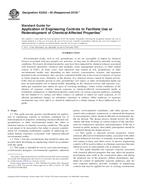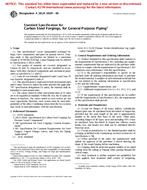1.1 This test method covers the determination of particle size distributions of metal powders. Experience has shown that this test method is satisfactory for the analysis of elemental tungsten, tungsten carbide, molybdenum, and tantalum powders, all with an as-supplied Fisher number of 6 m or less, as determined by Test Method B 330. Other metal powders (for example, elemental metals, carbides, and nitrides) may be analyzed using this test method with caution as to significance until actual satisfactory experience is developed (see 7.2). The procedure covers the determination of particle size distribution of the powder in the following two conditions:
1.1.1 As the powder is supplied (as-supplied), and
1.1.2 After the powder has been deagglomerated by rod milling as described in Practice B 859.
1.2 This test method is applicable to particles of uniform density and composition having a particle size distribution range of 0.1 up to 100 µm.
1.2.1 However, the relationship between size and sedimentation velocity used in this test method assumes that particles sediment within the laminar flow regime. This requires that the particles sediment with a Reynolds number of 0.3 or less. Particle size distribution analysis for particles settling with a larger Reynolds number may be incorrect due to turbulent flow. Some materials covered by this test method may settle with Reynolds number greater than 0.3 if particles greater than 25 m are present. The user of this test method should calculate the Reynolds number of the largest particle expected to be present in order to judge the quality of obtained results. Reynolds number (Re) can be calculated using the flowing equation
Re = D³(ρ – ρ 0ρog
/18π²
where
D = the diameter of the largest particle expected to be present,
ρ = the particle density,
ρ0 = the suspending liquid density,
g = the acceleration due to gravity, and
π = is the suspending liquid viscosity.
A table of the largest particles that can be analyzed with Reynolds number of 0.3 or less in water at 35°C is given for a number of metals in Table 1. A column of the Reynolds number calculated for a 30-µm particle sedimenting in the same liquid system is given for each material also.
1.3 This standard does not purport to address all of the safety concerns, if any, associated with its use. It is the responsibility of the user of this standard to establish appropriate safety and health practices and determine the applicability of regulatory limitations prior to use. Specific hazard information is given in Section 7.
Product Details
- Published:
- 01/01/2002
- Number of Pages:
- 4
- File Size:
- 1 file , 48 KB


